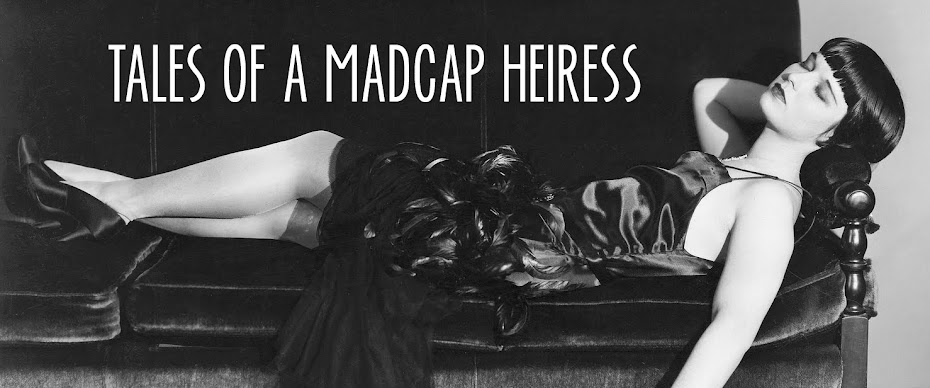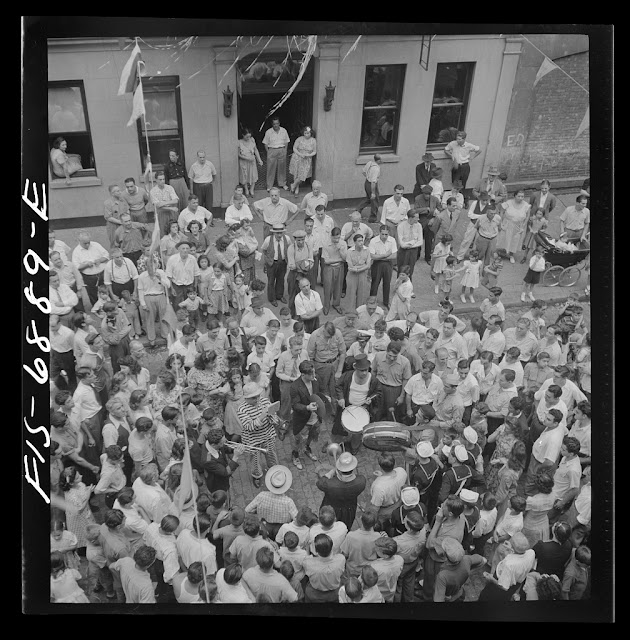Elsa Lanchester as the Bride of Frankenstein
It’s not often that a sequel is better than the original but many believe that Universal’s Bride of Frankenstein (1935) is one of those cases. Picking up where Frankenstein (1931) left off, the movie reunited director James Whale with Henry Frankenstein (Colin Clive) and the Monster (Boris Karloff) and catapulted a little known actress named Elsa Lanchester into film history.
In the opening credits, Lanchester is only listed as playing the part of Mary Shelley while the audience is teased with “The Monster’s Mate…?” Karloff, by the way, was so well known that he didn’t even need to use his first name; the credits just say "Karloff...The Monster."
Lanchester appears in the opening
prologue of the film as Mary Shelley, who is in Switzerland on a dark and
stormy night with her husband, Percy Shelley, and their friend, Lord Byron, who
expresses his amazement that this astonishing creature that’s afraid of the
dark could write a tale that “sent my blood into icy creeps.” “My purpose was to write a moral
lesson,” Mary tells him. “The punishment that befell a mortal man that dared to
emulate God.” She asks Byron not to remind her of the story she’s written but
Byron ignores her and starts to recap Frankenstein. The accompanying clips from the first film serve to not only remind the viewers of the story but to bring them back to the final scene. When Shelley comments that it was a shame
that she ended her story so suddenly Mary says, “That wasn’t the end at all. Would
you like to hear what happened after that?” Entranced, Byron and Shelley sit
next to her while she asks them, “Imagine yourself standing by the wreckage of
the mill…”
Cut to the villagers cheering the
burning of the mill and death of the Monster. Dr. Henry Frankenstein's housekeeper Minnie (played by the always
delightful Una O’Connor) stands at the top of the hill and declares, “I’m glad to see the Monster roasted to death before my very eyes.” But she’s mistaken. The Monster
is very much alive and soon is taking out his anger on the locals.
Henry Frankenstein, who was thought to be dead as well but is still alive, recovers and marries his fiancée Elizabeth (Valerie Hobson). He
is trying to put his past behind him when his mentor arrives, the demented Dr. Septimus
Pretorius (played by Ernest Thesiger who injects an element of camp into his scenes). Henry goes with Pretorius to his lab where
he is shown a collection of homunculi, miniature people whom Pretorius has
created from seeds and keeps in a collection of jars (how they manage to stay
alive is never addressed). They include a king, queen, archbishop, devil,
ballerina, and mermaid (the whole scene is surreal and very well done). Stumped in his
attempts to create full-size people, Pretorius proposes that he and Henry work
together and create a mate for Henry’s Monster. “To a new world of gods and
monsters,” he toasts his reluctant former pupil.
Meanwhile the Monster has been
wrecking havoc and after escaping being chained up in jail, stumbles
upon a cabin in the woods where a blind hermit (O.P. Heggie) lives. The old
man, who has prayed for a friend, takes the Monster in and soon teaches him to
talk including learning the word “friend.” (The only problem watching this scene now is doing so and trying not to think of Young Frankenstein.) The Monster calms down and seems to
be content, even happy, until two hunters arrive and attempt to kill him (the Monster just can’t catch a break). In the ensuing fight, the cabin catches on
fire and the Monster flees.
Entering a crypt, the Monster
encounters Pretorius who offers him food and drink and even a cigar,
telling the Monster that he plans on creating a mate for him. The Monster, who has
taken to saying things like “Alone: bad. Friend: good” and “I want friend like
me” is eager to follow Pretorius’s command.
When Henry refuses to help his
former mentor, Pretorius has the Monster kidnap Elizabeth, forcing Henry’s
hand. Having harvested the brain, Pretorius gets Henry working on the other parts. When
a convenient storm hits the village, they prepare for the “birth” of their
creation, an event very reminiscent of the Monster’s birth.
Lying on the table wrapped in
bandages, the creature resembles a mummy, and a very female one at that (she even
appears to have long fingernails). With kites flying and lightening striking,
the table is raised up through the open rooftop of the lab. When it returns, a movement of the hands, open dark eyes, and a slight moan prompt Henry to
utter a now familiar line, “She’s alive. Alive!” (This line never gets old).
The creature is unwrapped and
presented in her full glory, draped in a white sheet that acts as a gown and her
electrified hair (complete with a white stripe shaped like a lightening bolt) standing straight up in the air. She darts her face around, reminiscent of a baby bird’s movements. As if
announcing her arrival at a ball, Pretorius introduces her, “the Bride of
Frankenstein.”
Still shaky on her feet, the two doctors help the Bride stand as she looks around. The Monster, who’s been waiting in the wings
(well, he was on the roof for a bit and threw one of Pretorius’ henchmen to his death)
steps into the scene and asks, “friend?” His Bride responds with a shriek and
stumbles toward Henry. Sitting side by side, the Monster takes her hand and
pats it (the blind man taught him well) as Henry looks on with concern. When
the Monster reaches for her, she shrieks again and he says, “She hate me. Like
others.” The three retreat while the Monster comes toward them. When he stops
in front of a lever, Pretorius tells him to “Get away from that lever. You’ll
blow us all to atoms.”
At this moment Elizabeth, who has managed to escape, arrives
and begs Henry to come away. When he tells her he can’t leave the others, the
Monster tells him, “Yes, go. You live. Go.” Turning to Pretorius he says, “You
stay. We belong dead.” The Bride hisses at the Monster who has a
tear falling down his cheek. He pulls the lever and the laboratory explodes. Henry
and Elizabeth, who have escaped, stand wrapped in each other’s arms, watching
the destruction.
The movie was a huge hit with
critics and audiences alike, with praise being given not just to the director
and cast but also to cinematographer John J. Mescall, make-up artist Jack
Pierce, and composer Franz Waxman for his score.
The studio had wanted to make a
sequel right after the original movie but Whale had initially refused. Luckily, he
changed his mind and after several attempts by various writers, William J. Hurlbut wrote a script that met with Whale's approval. Karloff agreed to take on the role of the Monster again but
was unhappy that this time round he would speak, believing part of the Monster's appeal was the fact that he was inarticulate. Speaking lines also meant that Karloff had to wear his dental plate, which gave the Monster a fuller face than in the
previous movie.
The production was not without its
challenges. Colin Clive broke his leg horseback riding shortly before production
began and so he had to shoot most of his scenes sitting down. And during
the scene at the destroyed mill, Karloff slipped into a well and dislocated his hip.
And then there was Lanchester’s Bride whose appearance is electrifying (no pun intended). Her face make-up took
three hours alone to complete. Even with scars under her chin that run around her ears and neck, her painted eyebrows, mascara heavy eyelashes, and dark red lips make her into a glamourous monster. For her famed hairstyle, a wire cage was used to make Lanchester’s own hair stand up. The petite actress was placed on stilts while her costume was tightly wrapped around
her body, making it impossible for her to move. She was carried wherever she
needed to go and fed by her assistant. As for the hissing sounds that the Bride makes, Lanchester based those on
the swans in Hyde Park.
The final result was an unforgettable performance as one of the most iconic monsters to ever grace the silver screen. Not bad for a five-minute appearance.






















